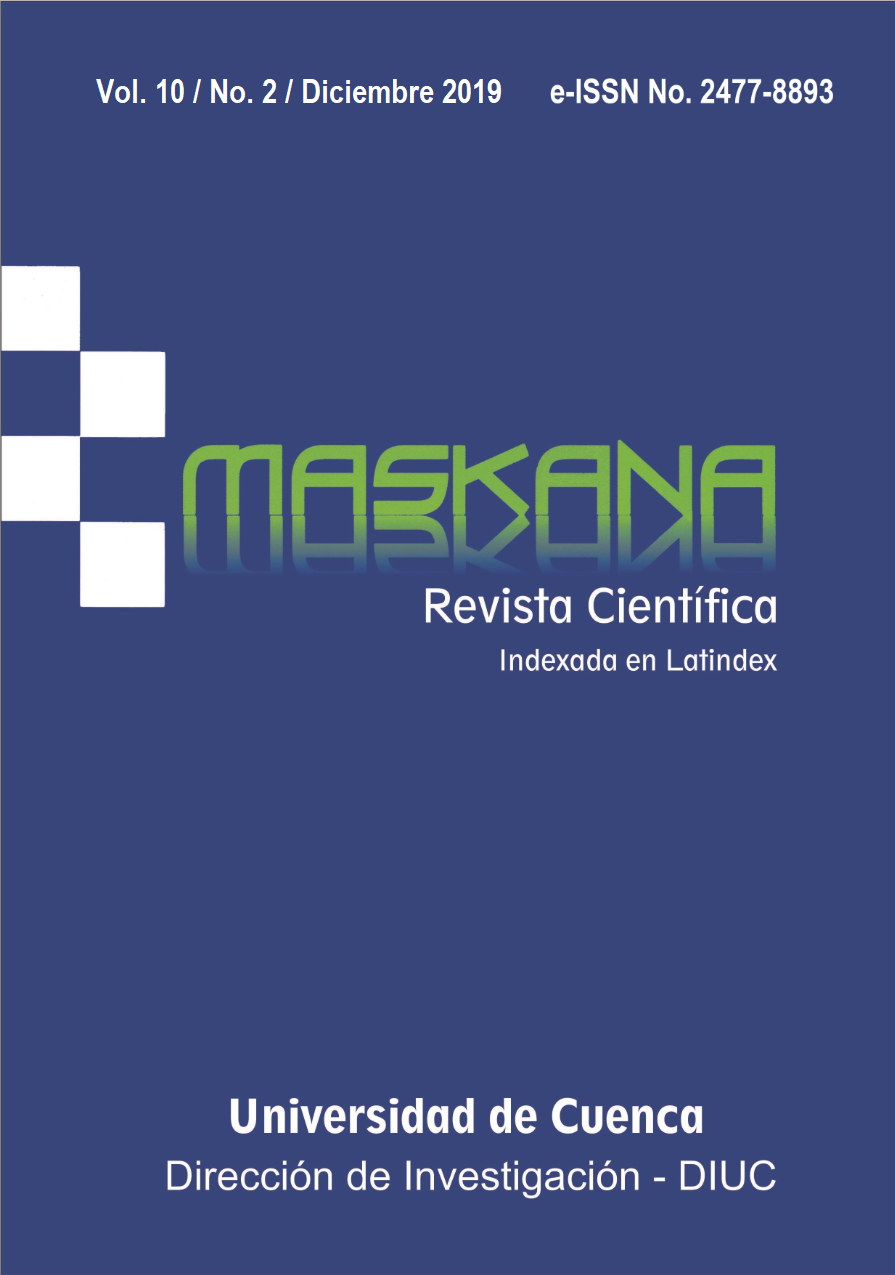Quantitative analysis of a binary mixture from UV spectrophotometric data using an alternative method
DOI:
https://doi.org/10.18537/10.02.09Keywords:
instrumental analysis, mixtures analysis, UV spectrophotometryAbstract
This work describes a laboratory exercise useful for an instrumental analysis course. In the exercise, an alternative method is applied to carry out the quantitative analysis of a binary mixture from UV spectrophotometric data. For this purpose, a mixture with known concentrations of 4-aminobenzoic acid and nicotinic acid was prepared, its absorbances at several wavelengths in the interval of 242 to 330 nanometers were recorded, and the resulting data were subjected to the alternative procedure. In this one, a simple transformation on the absorbance equation of the mixture is applied to obtain a linear relationship from which the concentrations of the components are calculated. In spite of its simplicity, the method produces a very good agreement between the calculated concentrations and the actual ones, errors within 2% have been found. The exercise provides an interesting alternative to the conventional procedure customarily taught in an instrumental analysis course.
Downloads
Metrics
References
Afkhami, A., & Baharam, M. (2005). Mean centering of ratio spectra as a new spectrophotometric method for the analysis of binary and ternary mixtures. Talanta, 66(3), 712-720.
Attia, K., Nassar, M., El-Zeiny, M., & Serag, A. (2016). Different spectrophotometric methods applied for the analysis of binary mixture of flucloxacillin and amoxicillin: A comparative study. Spectrochimica Acta Part A: Molecular and Biomolecular Spectroscopy, 161, 64-69.
Bashford, C. (1983). Spectrophotometry & Spectrofluorimetry: A Practical Approach. IRL Press Limited, pp. 1-22.
Coello de Escobar, C., & Zimnoch, J. (2014). Effect of the sol-gel route on the textural characteristics of silica imprinted with Rhodamine B. Journal of Separation Science, 37(7), 868-875.
Coello de Escobar, C., Dallegrave, A., Lasarin, M., & Zimnoch, J. (2015). The sol-gel route effect on the preparation of molecularly imprinted silica-based materials for selective and competitive photocatalysis. Colloids and Surfaces A: Physicochemical and Engineering Aspects, 486, 96-105.
Connors, K. A. (1976). Linear graphical kinetic analysis of mixtures. Analytical Chemistry, 48(6), 87-89.
Connors, K. A. (1977). Graphical interpolation method for the kinetic analysis of three-component mixtures. Analytical Chemistry, 49(12), 1650-1655.
Connors, K. A., & Eboka, J. (1979). Alternative graphical methods for the spectrophotometric analysis of mixtures. Analytical Chemistry, 51(8), 1262-1266.
El-Bardiciy, M., Lofty, H., El-Sayed, M., & El-Tarras, M. (2008). Smart stability-indicating spectrophotometric methods for determination of binary mixtures without prior separation. Journal of AOAC International, 91(2), 299-310.
Gazdaru, M., & Iorga, B. (2002). Spectrophotometric analysis of the mixtures of photosynthetic pigments. Journal of Optoelectronics and Advanced Materials, 4(1), 121-129.
Ghasemi, J., & Mandoumi, N. (2008). A new algorithm for the characterization of thermodynamics of monomer-dimer process of dye stuffs by photometric temperature titration. Acta Chimica Slovenia, 55(2), 377-384.
Gonzalez, A., Pablos, F., & Asuero, A. (1991). Spectrophotometric determination of acidic constants of compounds with unsuitable absorption features. International Journal of Pharmaceutics, 72, 193-197.
Hassan, S., & Abdel-Gawad, S. (2018). Application of wavelet and Fourier transforms as powerful alternatives for derivative spectrophotometry in analysis of binary mixtures: A comparative study. Spectrochimica Acta Part A: Molecular and Biomolecular Spectroscopy, 191, 365-371.
Lofty, H., Hegazi, M., Rezk, M., & Omram, Y. (2015). Comparative study of novel versus conventional two-wavelenght spectrophotometric methods for analysis of spectrally overlapping binary mixtures. Spectrochimica Acta Part A: Molecular and Biomolecular Spectroscopy, 148, 328-337.
Naud, D. L. (1996). Thermal descomposition of arylnitramines. Journal of the Chemical Society, Perkin Transactions 2.0, 1321-1324.
Parmar, A., & Sharma, S. (2016). Derivative UV-vis absorption spectra as an invigorated spectrophotometric method for spectral resolution and quantitative analysis: Theoretical aspects and analytical application: A review. TrAC Trends in Analytical Chemistry, 77, 44-53.
Perkampus, H-H. (1992). UV-VIS Spectroscopy and its application. Berlin, Germany: Springer Lab Manuals book series. 244 pp.
Turabik, M. (2008). Adsorption of basic dyes from single and binary component systems onto bentonite: Simultaneous analysis of basic red 43 and basic yellow 28 by first order derivative spectrophotometric analysis method. Journal of Hazardous materials, 158(1), 52-64.
Vijayalakshmi, N., Abdul Feroz, S. K., Naga Masa, Ch., & Jaswanthi, P. (2017). Method development and validation for the estimation of Ofloxacin and Nitaxozanide present in bulk & tablet by simultaneous equation method using UV-spectrophotometry. World Journal of Pharmacy and Pharmaceutical Sciences, 6(6), 1204-1211.
Published
How to Cite
Issue
Section
License
Copyright © Autors. Creative Commons Attribution 4.0 License. for any article submitted from 6 June 2017 onwards. For manuscripts submitted before, the CC BY 3.0 License was used.
![]()
You are free to:
 |
Share — copy and redistribute the material in any medium or format |
 |
Adapt — remix, transform, and build upon the material for any purpose, even commercially. |
Under the following conditions:
 |
Attribution — You must give appropriate credit, provide a link to the licence, and indicate if changes were made. You may do so in any reasonable manner, but not in any way that suggests the licenser endorses you or your use. |
| No additional restrictions — You may not apply legal terms or technological measures that legally restrict others from doing anything the licence permits. |









